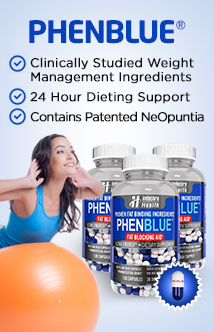Low Sodium Diet
- Hits: 5919
Sodium (salt) is essential for good health and diet nutrition. Trouble is, sodium has become a popular additive in processed foods and too much table salt is added by eaters. As a result, many people consume three to seven times more sodium than they need.
High Sodium Diet Causes High Blood Pressure (Hypertension)
Over-consumption of sodium (eg. salt) causes more fluid to be contained in the blood vessels. This increase in the volume of blood within the confines of the circulatory system contributes to a rise in blood pressure. In addition, sodium causes extra work for the arterioles (arterioles are blood vessels that dilate and constrict to regulate blood pressure and blood flow). The effect is to increase resistance to blood movement and reduce the volume of blood that is returned to the heart. This action also increases blood pressure.
Controlling Sodium Intake with a Low Sodium Diet
Sodium Intake (and thus to an extent your blood pressure) can be controlled by doing three things:
-
Eat a diet of predominately fresh instead of processed food.
-
Become more aware of the sources of sodium in your diet.
-
Moderate your intake of salty food, and table salt.
Low Sodium Diet Tips
-
Eat More Fresh Foods, Less Processed Foods - Sodium is found naturally in fresh foods like meats, nuts, grains, fruits, vegetables, and dairy products in low amounts. But these sources of sodium should prove quite sufficient for good health. Reduce your intake of high-sodium processed foods. Such processed foods include: Soups, Ready-to-eat cereals, Celery salt, Garlic salt, Catsup, Mustard, Sauces, Baking powder, Baking soda, Potato chips, Corn chips, Tortilla chips, Saccharin-flavored soda, Club soda, Sodium-nitrite cured meats (eg. bacon, ham, salami), Fast food.
-
Be Aware of the Sodium Content of Packaged Foods - Food manufacturers, in the process of preserving and processing, add table salt, and it is widely used as a flavor enhancer. Sodium is also hidden as a part of other chemical additives, such as sodium nitrite, sodium benzoate saccharin, sodium, and monosodium glutamate. Check food labels for any ingredients containing the word "sodium." Subject to your doctor's advice, choose lower-sodium foods whenever possible.
-
Add Less Salt to the Food on Your Plate - Many people add too much salt to their diet purely out of habit. This only encourages a salty-taste. A better approach is to keep salt off the table and use other herbs and spices to add extra flavor.
The DASH Diet - Low Sodium Diet to Reduce Blood Pressure
The DASH Diet ("Dietary Approaches to Stop Hypertension") is an officially approved Blood Pressure Diet to help control hypertension. Studies show that the DASH "combination diet" lowers Blood Pressure and, may help prevent and control high blood pressure. The "combination diet" is rich in fruits, vegetables, and low fat dairy foods, and low in saturated and total fat. It also is low in cholesterol, high in dietary fiber, potassium, calcium, and magnesium, and moderately high in protein. The DASH eating plan is based on 2,000 calories a day.














